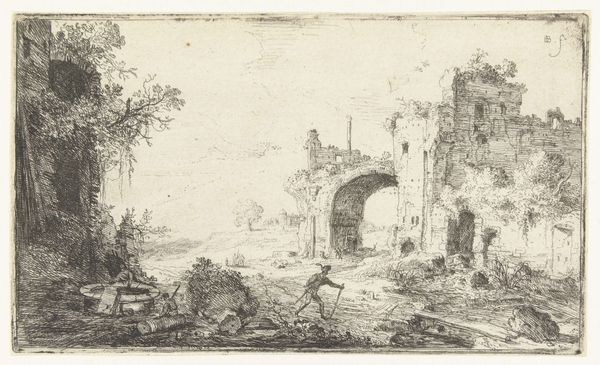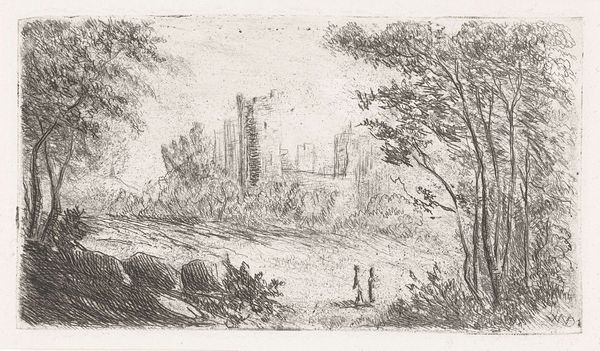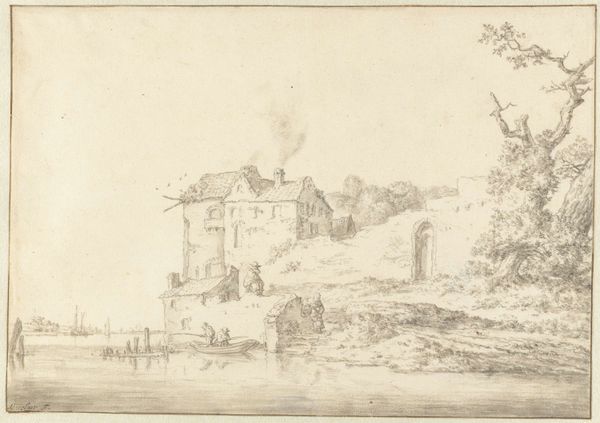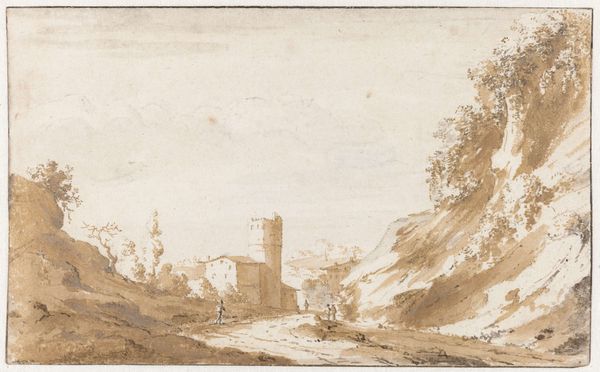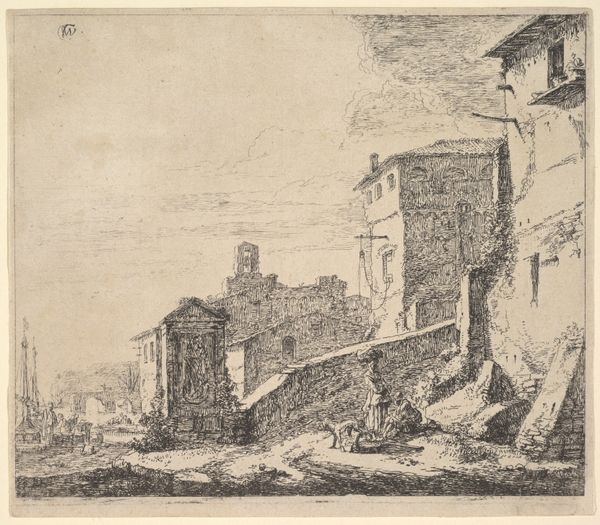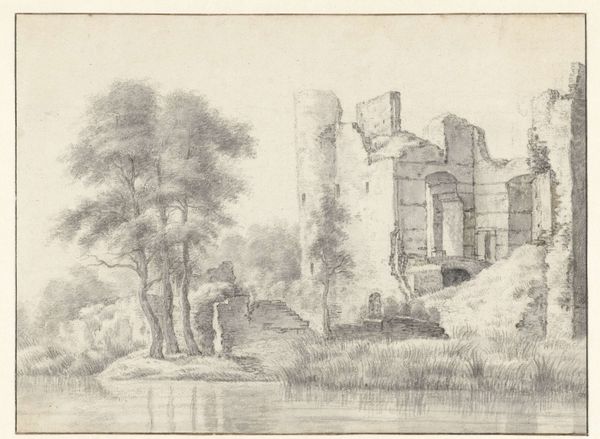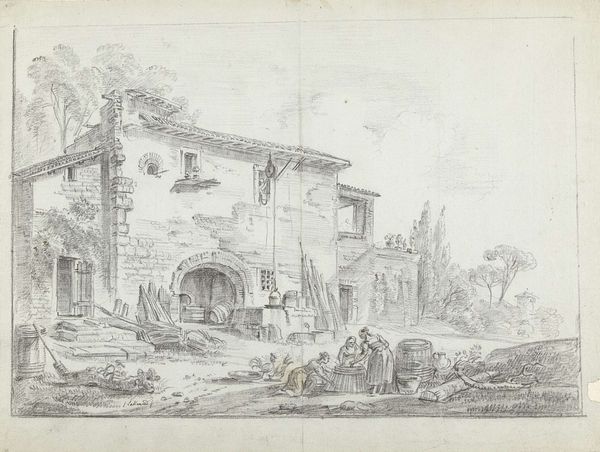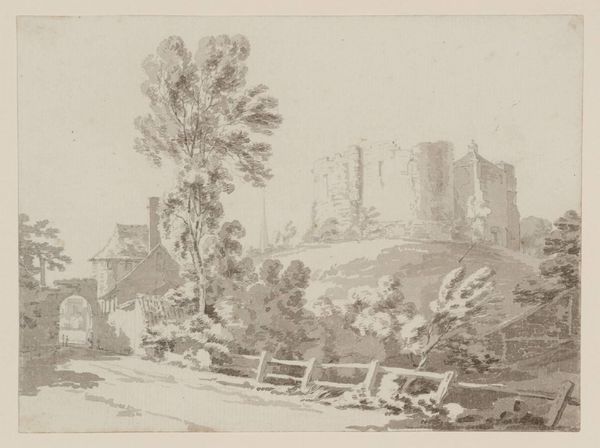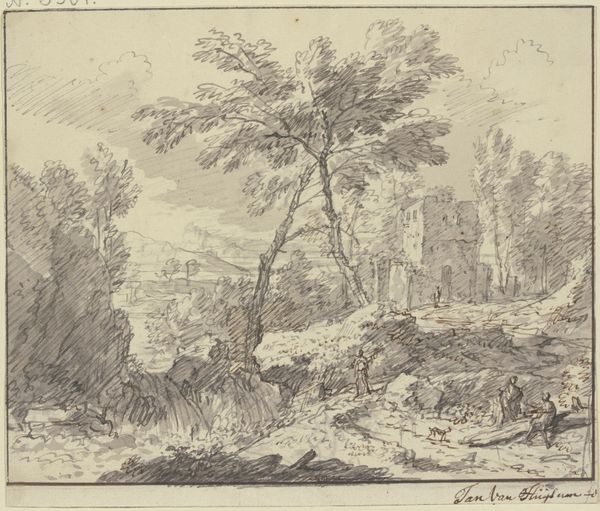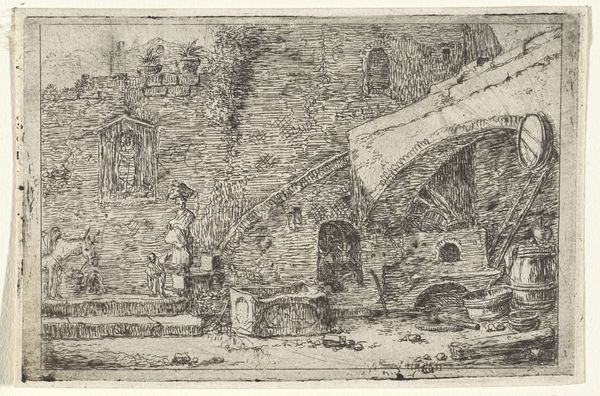
drawing, ink, pencil, pen
#
drawing
#
aged paper
#
toned paper
#
light pencil work
#
pencil sketch
#
old engraving style
#
landscape
#
personal sketchbook
#
ink
#
pen-ink sketch
#
pencil
#
pen work
#
sketchbook drawing
#
pen
#
cityscape
#
italian-renaissance
#
sketchbook art
Dimensions: height 124 mm, width 193 mm
Copyright: Rijks Museum: Open Domain
Editor: So, this is Abraham Casembroot’s "Italian Landscape with Ruins," created sometime between 1650 and 1675. It's a pen, pencil, and ink drawing on toned paper. I'm immediately struck by this sense of melancholy, like the grandeur of the past is slowly fading away. What do you see in this piece? Curator: It speaks of cycles, doesn't it? The skeletal remains of architecture, overtaken by nature, offer potent symbols. Do you see how the ruins aren't simply "fallen," but almost…absorbed? They are returning to an older order. What feelings arise when you consider that in relation to the figures in the foreground? Editor: It does give the figures a certain humility. They appear quite small in comparison to these massive ruins. Like they are almost pilgrims amongst these monuments of a lost age. Curator: Precisely. These "ruins" can symbolize lost empires, beliefs, or even personal aspirations. Casembroot reminds us of *memento mori*, echoing throughout Western culture. The overgrown landscape acts as a constant cycle, a symbolic graveyard but also a field ripe for renewal, as new stories take the place of the old. Think of what 'Italy' represented to northern Europeans at this time, a crucible of history, art, and both spiritual and temporal power. How does the medium, a sketch, impact the weight of these symbols? Editor: Good question! The sketch-like quality softens it, making it seem less overtly didactic. It's not a grand statement but a personal reflection, a fleeting moment of contemplation captured. The Italian Renaissance wasn't just about a love for classicism, but was about constant remembering and reflection on the temporality of humanity, and history. Curator: Absolutely. It’s an intimate glimpse into the artist’s engagement with enduring themes, isn’t it? Editor: Definitely. It's amazing how much meaning can be conveyed through such simple lines and shading. I never considered the relationship of medium to *memento mori* before. Curator: These visual echoes reverberate through time, shaping how we perceive ourselves and our place in the world. I'm so happy to know my Iconographic perspective offered insight today.
Comments
No comments
Be the first to comment and join the conversation on the ultimate creative platform.
